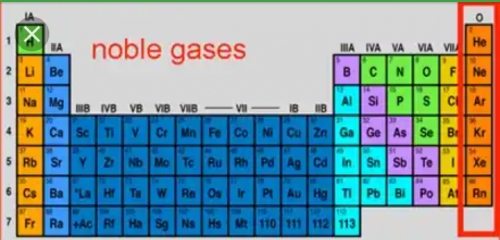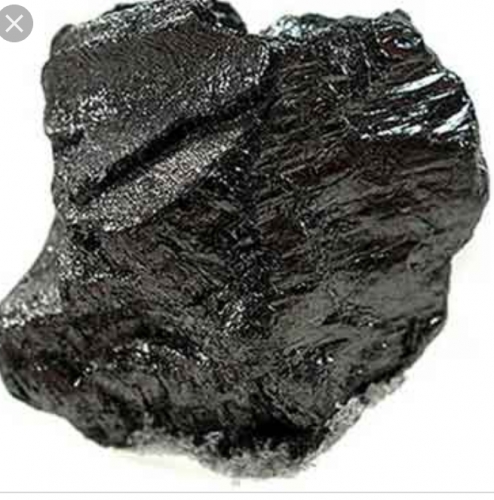profile/8353Screenshot_20200331-094903_1587577731019_1587577751346.png
OluwatoyinboTV12

Occurrence, Preparation, And Properties Of The Noble Gases
~4.2 mins read
The elements in group 18 are the noble gases (helium, neon, argon, krypton, xenon, and radon). They earned the name “noble†because they were assumed to be nonreactive since they have filled valence shells. In 1962, Dr. Neil Bartlett at the University of British Columbia proved this assumption to be false.
These elements are present in the atmosphere in small amounts. Some natural gas contains 1–2% helium by mass. Helium is isolated from natural gas by liquefying the condensable components, leaving only helium as a gas. The United States possesses most of the world’s commercial supply of this element in its helium-bearing gas fields.
Argon, neon, krypton, and xenon come from the fractional distillation of liquid air. Radon comes from other radioactive elements. More recently, it was observed that this radioactive gas is present in very small amounts in soils and minerals. Its accumulation in well-insulated, tightly sealed buildings, however, constitutes a health hazard, primarily lung cancer.
The boiling points and melting points of the noble gases are extremely low relative to those of other substances of comparable atomic or molecular masses. This is because only weak London dispersion forces are present, and these forces can hold the atoms together only when molecular motion is very slight, as it is at very low temperatures. Helium is the only substance known that does not solidify on cooling at normal pressure. It remains liquid close to absolute zero (0.001 K) at ordinary pressures, but it solidifies under elevated pressure.
Helium is used for filling balloons and lighter-than-air craft because it does not burn, making it safer to use than hydrogen. Helium at high pressures is not a narcotic like nitrogen. Thus, mixtures of oxygen and helium are important for divers working under high pressures. Using a helium-oxygen mixture avoids the disoriented mental state known as nitrogen narcosis, the so-called rapture of the deep. Helium is important as an inert atmosphere for the melting and welding of easily oxidizable metals and for many chemical processes that are sensitive to air.
Liquid helium (boiling point, 4.2 K) is an important coolant to reach the low temperatures necessary for cryogenic research, and it is essential for achieving the low temperatures necessary to produce superconduction in traditional superconducting materials used in powerful magnets and other devices. This cooling ability is necessary for the magnets used for magnetic resonance imaging, a common medical diagnostic procedure. The other common coolant is liquid nitrogen (boiling point, 77 K), which is significantly cheaper.
Neon is a component of neon lamps and signs. Passing an electric spark through a tube containing neon at low pressure generates the familiar red glow of neon. It is possible to change the color of the light by mixing argon or mercury vapor with the neon or by utilizing glass tubes of a special color.
Argon was useful in the manufacture of gas-filled electric light bulbs, where its lower heat conductivity and chemical inertness made it preferable to nitrogen for inhibiting the vaporization of the tungsten filament and prolonging the life of the bulb. Fluorescent tubes commonly contain a mixture of argon and mercury vapor. Argon is the third most abundant gas in dry air.
Krypton-xenon flash tubes are used to take high-speed photographs. An electric discharge through such a tube gives a very intense light that lasts only 150,000150,000 of a second. Krypton forms a difluoride, KrF2, which is thermally unstable at room temperature.
Stable compounds of xenon form when xenon reacts with fluorine. Xenon difluoride, XeF2, forms after heating an excess of xenon gas with fluorine gas and then cooling. The material forms colorless crystals, which are stable at room temperature in a dry atmosphere. Xenon tetrafluoride, XeF4, and xenon hexafluoride, XeF6, are prepared in an analogous manner, with a stoichiometric amount of fluorine and an excess of fluorine, respectively. Compounds with oxygen are prepared by replacing fluorine atoms in the xenon fluorides with oxygen.
When XeF6 reacts with water, a solution of XeO3 results and the xenon remains in the 6+-oxidation state:
XeF6(s)+3H2O(l)⟶XeO3(aq)+6HF(aq)XeF6(s)+3H2O(l)⟶XeO3(aq)+6HF(aq)
Dry, solid xenon trioxide, XeO3, is extremely explosive—it will spontaneously detonate. Both XeF6 and XeO3 disproportionate in basic solution, producing xenon, oxygen, and salts of the perxenate ion, XeO64−,XeO64−, in which xenon reaches its maximum oxidation sate of 8+.
Radon apparently forms RnF2—evidence of this compound comes from radiochemical tracer techniques.
Unstable compounds of argon form at low temperatures, but stable compounds of helium and neon are not known.
Key Concepts and Summary
The most significant property of the noble gases (group 18) is their inactivity. They occur in low concentrations in the atmosphere. They find uses as inert atmospheres, neon signs, and as coolants. The three heaviest noble gases react with fluorine to form fluorides. The xenon fluorides are the best characterized as the starting materials for a few other noble gas compounds.
profile/8353Screenshot_20200331-094903_1587577731019_1587577751346.png
OluwatoyinboTV12

Carbon
~3.4 mins read
Carbon
Carbon occurs in the uncombined (elemental) state in many forms, such as diamond, graphite, charcoal, coke, carbon black, graphene, and fullerene.
Diamond, shown in the figure below, is a very hard crystalline material that is colorless and transparent when pure. Each atom forms four single bonds to four other atoms at the corners of a tetrahedron (sp3 hybridization); this makes the diamond a giant molecule. Carbon-carbon single bonds are very strong, and, because they extend throughout the crystal to form a three-dimensional network, the crystals are very hard and have high melting points (~4400 °C).

(a) Diamond and (b) graphite are two forms of carbon. (c) In the crystal structure of diamond, the covalent bonds form three-dimensional tetrahedrons. (d) In the crystal structure of graphite, each planar layer is composed of six-membered rings. (credit a: modification of work by “Fancy Diamondsâ€/Flickr; credit b: modification of work from http://images-of-elements.com/carbon.php)
Graphite, also shown in the figure above, is a soft, slippery, grayish-black solid that conducts electricity. These properties relate to its structure, which consists of layers of carbon atoms, with each atom surrounded by three other carbon atoms in a trigonal planar arrangement. Each carbon atom in graphite forms three σ bonds, one to each of its nearest neighbors, by means of sp2-hybrid orbitals. The unhybridized p orbital on each carbon atom will overlap unhybridized orbitals on adjacent carbon atoms in the same layer to form π bonds. Many resonance forms are necessary to describe the electronic structure of a graphite layer; the figure below illustrates two of these forms.

(a) Carbon atoms in graphite have unhybridized p orbitals. Each p orbital is perpendicular to the plane of carbon atoms. (b) These are two of the many resonance forms of graphite necessary to describe its electronic structure as a resonance hybrid.
Atoms within a graphite layer are bonded together tightly by the σ and π bonds; however, the forces between layers are weak. London dispersion forces hold the layers together. To learn more, see the discussion of these weak forces in the tutorial on liquids and solids. The weak forces between layers give graphite the soft, flaky character that makes it useful as the so-called “lead†in pencils and the slippery character that makes it useful as a lubricant. The loosely held electrons in the resonating π bonds can move throughout the solid and are responsible for the electrical conductivity of graphite.
Other forms of elemental carbon include carbon black, charcoal, and coke. Carbon black is an amorphous form of carbon prepared by the incomplete combustion of natural gas, CH4. It is possible to produce charcoal and coke by heating wood and coal, respectively, at high temperatures in the absence of air.
Recently, new forms of elemental carbon molecules have been identified in the soot generated by a smoky flame and in the vapor produced when graphite is heated to very high temperatures in a vacuum or in helium. One of these new forms, first isolated by Professor Richard Smalley and coworkers at Rice University, consists of icosahedral (soccer-ball-shaped) molecules that contain 60 carbon atoms, C60. This is buckminsterfullerene (often called bucky balls) after the architect Buckminster Fuller, who designed domed structures, which have a similar appearance (see the figure below).

The molecular structure of C60, buckminsterfullerene, is icosahedral.
Advertisement

Link socials
Matches
Loading...
